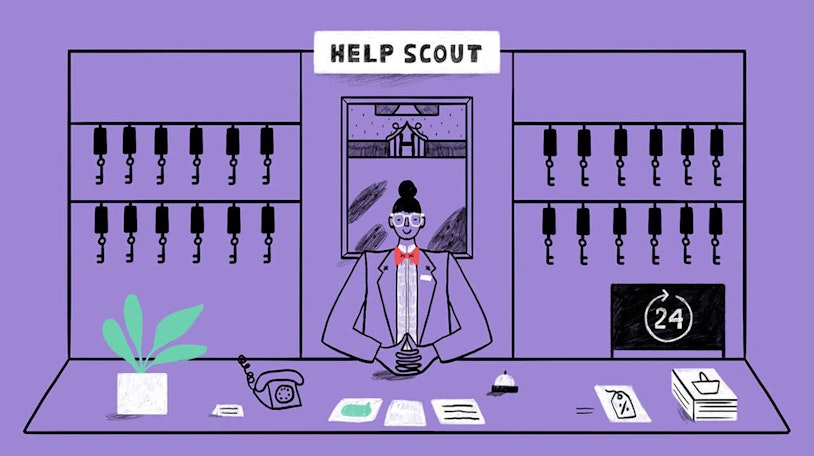Sales is a different game than it used to be.
Because technology continues to transform companies and consumer behavior, the old sales playbook doesn’t work anymore. Given the ever-changing but continued importance of sales, there are seemingly endless new methodologies all promising the way forward.
Everyone is looking for the magic ticket to boost sales, whether in traditional industries or emerging fields.
But the secret isn’t a secret. Put your customers first.
By focusing on customer centric selling, you elevate the people who matter and create real, resilient relationships that anchor a sustainable revenue stream.
What is customer centric selling?
Customer centric selling elevates your customer and empathizes with their needs in every stage of the sales process. You adapt to the specific circumstances of the customer by nurturing a two-way dialogue, adjusting to their timeline, and serving as their greatest problem-solving ally. On a grand scale, you make the world a better place by helping people.
Why is customer centric selling important to your business?
Customers benefit from more choices (and information about their choices) than ever before. To stand out among many options, you need to resonate with their specific needs, challenges and goals. Approaching the sales process as an opportunity to tease out how you can serve customers is the only way to set up a successful, sustainable relationship.
How do you build a customer-centric sales process?
To build a customer centric sales process, you need to evolve the way your sales team relates to customers. Consciously put your sales team in the shoes of customers every day and work to integrate the customer experience across pre- and post-sales. When there’s alignment in every stage of the customer relationship — and in every part of an organization — sales can serve as the catalyst that ensures a better future for customers.
How to prioritize customer centric selling
To implement a customer-centric approach, you need to shift the way your team thinks about sales. Yes, sales teams need to hit key metrics to maintain a revenue stream. But their actions also must align with the higher purpose of helping people every day. In a customer centric company, the long-term success of the customer trumps short-term gains of the company.
Think about how your team’s current approach to sales matches (or doesn’t match) the following key principles. These big takeaways can redirect a team to have an outsized effect on customers and your company.
1. Foster empathy for the customer
The first thing any sales leader can do is to hire salespeople with the right skill sets. Sometimes, the stereotypes of which personalities lead to higher performance can inhibit teams from building a customer centric team.
Research from sales strategy professor Steve W. Martin found that conscientiousness and modesty were two of the key characteristics found in top salespeople. If you’re integrating customer centric selling into your organization, you’ll also want to hire for empathy. Instead of prioritizing their own needs, the best salespeople defer to the customer’s needs. Likewise, they elevate their team (product, engineering, customer success, support) as the key players who can transform customer challenges into assets.
Build out a plan to foster situation-specific empathy for the customer. Help Scout, for example, practices Whole Company Support, which gives everyone the opportunity to work in the customer support queue for a week. Team members benefit from transparency into the exact issues facing customers in each moment, which creates a kinship and empathy that translates beautifully across different teams.
Some companies take customer empathy a step further by creating scenarios that mirror the customers’ pain points. By sticking team members in situations that give them deep insight, you empower them to consider the value they can bring to real people. Get creative, ensuring that salespeople understand the nuanced and tangible difficulties customers experience every day.
2. Lead with curiosity in every interaction
When salespeople lead with curiosity, they allow the client’s goals to become their own. So it’s no coincidence that one survey found that 82% of top-performing salespeople benefit from extremely high levels of curiosity. The best professionals want to discern whether they’re the right fit — and how they can help — rather than force their vision on someone else.
The ideal salesperson asks insightful, intelligent questions to discern how they can help. That’s the case whether you’re selling an outfit or an enterprise-level SaaS tool. Ultimately, you want to chip away at the problem beneath the problem.
Imagine that you’re shopping fort a suit for a job interview. A great salesperson would hone in on what would best fit you for the day with friendly, warm questions:
Congratulations on the interview! What’s the job for?
Do you have a sense of how formal the office is?
Are there any styles you love or would like to avoid?
Are you going to wear this on other occasions?
Do you have a budget in mind?
The better the questions, the more valuable the customer experience can be. Through these questions, an excellent salesperson is really asking, “How can I help you feel great walking into such an important moment in your life?” They’re motivated not just by making the sale, but by connecting to the inherent value they can provide.
3. Empower a customer in overcoming challenges
What’s your intention when you step into a sales conversation? Is it to hit your quota or to empower a customer? In the book CustomerCentric Selling, authors Michael T. Bosworth and John Holland suggest that most people are wary of sales conversations because of the inherent pressure that they feel. Customers recoil at conversations that apply pressure without prioritizing their needs and putting them first.
That’s why salespeople benefit from guiding prospects through a path to solve problems with expertise and openness. If you step into a sales conversation to empower a customer to overcome an issue rather than “sell” a product, it sets a different tone. And here’s the kicker: According to Bosworth and Holland, customer-centric salespeople need to be willing to walk away if they know they can’t empower a customer to make the changes the situation requires.
Pushing through a bad fit creates tension within an organization, sticking post-sales team members in a difficult position to fulfill on a promise they didn’t make. Sales expert Daniel H. Pink says in To Sell is Human that salespeople benefit from asking themselves two questions to discern whether they’re helping a potential customer:
1. If the person you’re selling to agrees to buy, will his or her life improve?
2. When your interaction is over, will the world be a better place than when you began?
It the answer to either of those questions is no, then you’re not embodying a customer centric approach to sales.
4. Align with shared values and voice
As customers become more aware of the way they’re investing resources, they’re making purchasing decisions that align with their values. A 2018 study from the global marketing firm Edelman found that almost two-thirds of consumers will buy or boycott a brand due to its position on a social or political issue.
Because people believe companies have more power than governments to effect positive change, their buying habits are evolving. This emerging dynamic pushes brands to go beyond their interests to become advocates for their values within and outside of their organizations. In a customer centric company, you need to embody the values and voice of your customer in every aspect of your company.
Salespeople need to enter conversations with customers prepared to speak about company culture, the ethical implications of their purchases, and the company’s efforts to build internal accountability. Let’s say you want to help a diverse audience. You need to build out a diverse sales team and amplify diverse voices in your organization and wider field.
This emphasis on values translates to how you speak to your customers, too. Recognize and reflect your customers’ preferences rather than taking a prescriptive approach to sales. The only way to cut through the noise is to mirror the voice and tone of your customers. Maybe an informal conversation is more appropriate than a formal presentation.
5. Create one continuous, excellent customer experience
There are two ways to look at sales: One sales philosophy splits the customer experience into pre- and post-sales. The second philosophy considers sales as a seamless beginning to a dynamic customer experience.
Customer centric selling works so well because it aligns with the second philosophy. When you prioritize the entire customer experience, you’re able to integrate sales with every other aspect of the company, from customer centric marketing to product development.
This philosophy extends to Support-Driven Growth, the intentional process of differentiating yourself with excellent service and leveraging support for revenue-generating activities. Pink says, “Anytime you’re tempted to upsell someone else, stop what you’re doing and upserve instead. Don’t try to increase what they can do for you. Elevate what you can do for them.”
With that insight in mind, building an excellent customer experience is the key to unlocking revenue and enabling sales to do their job. Following through is even more important when you consider the power of referrals.
Every time a customer suggests your product or service, they’re putting their own reputation on the line. Don’t underestimate the power of informal, word-of-mouth conversations in customer centric selling. As former consultant Frederick F. Reichheld summarizes, “The only path to profitable growth may lie in a company’s ability to get its loyal customers to become, in effect, its marketing department.” Like an external marketing team, these loyal customers are the greatest ally of a sales team. Don’t sell them short.
Build reciprocity and respect with customer centric selling
At Help Scout, our Sales team acts as more of a services department. It’s our job to guide customers to a successful outcome. We wanted to design the sales process around customers and adjust the process according to their needs — our job is to help make sense of the noise to help the customer achieve their desired outcome. That’s what customer-centric selling is all about.
Going beyond traditional selling gives companies the freedom and flexibility to put customers (and their needs) first. By integrating a customer centric approach to every aspect of a company — not just sales — you set the foundation for meaningful relationships that transcend transactional agreements and empower sustainable growth.










